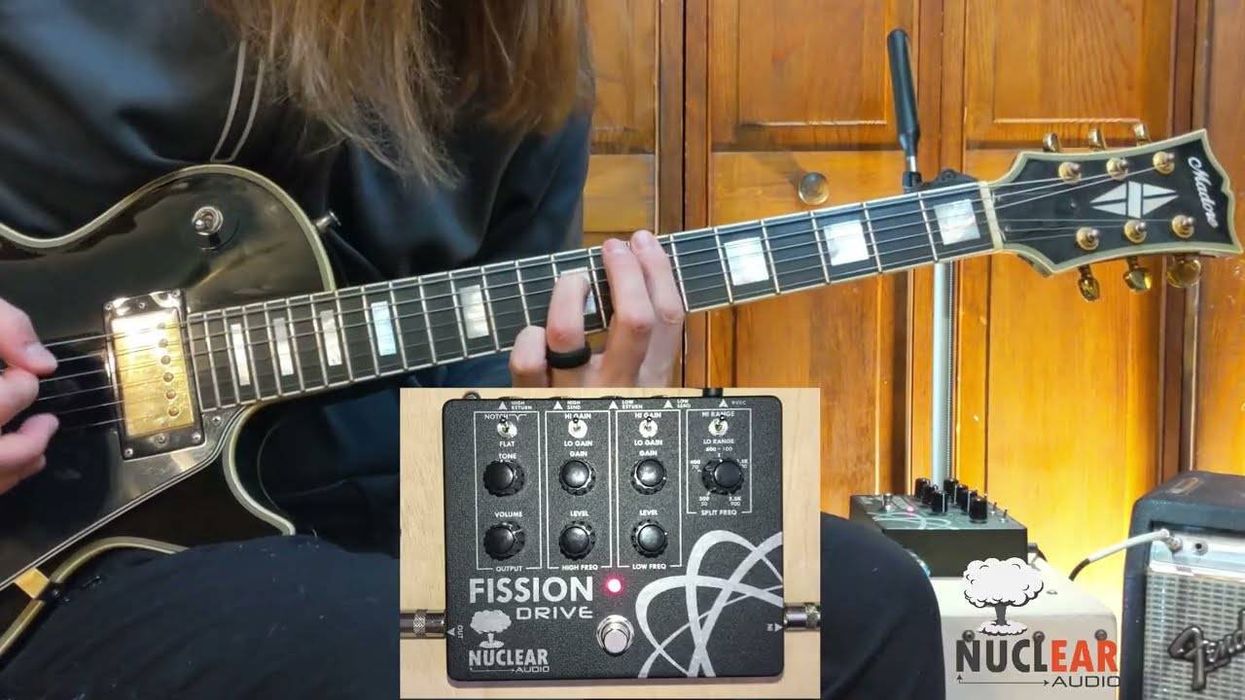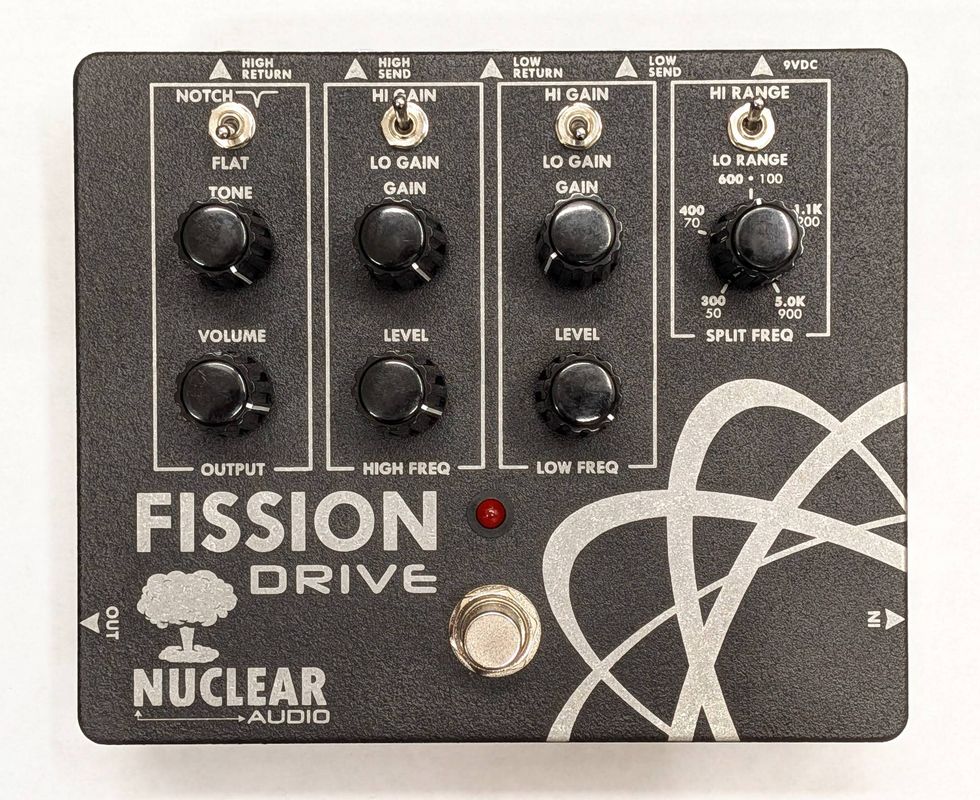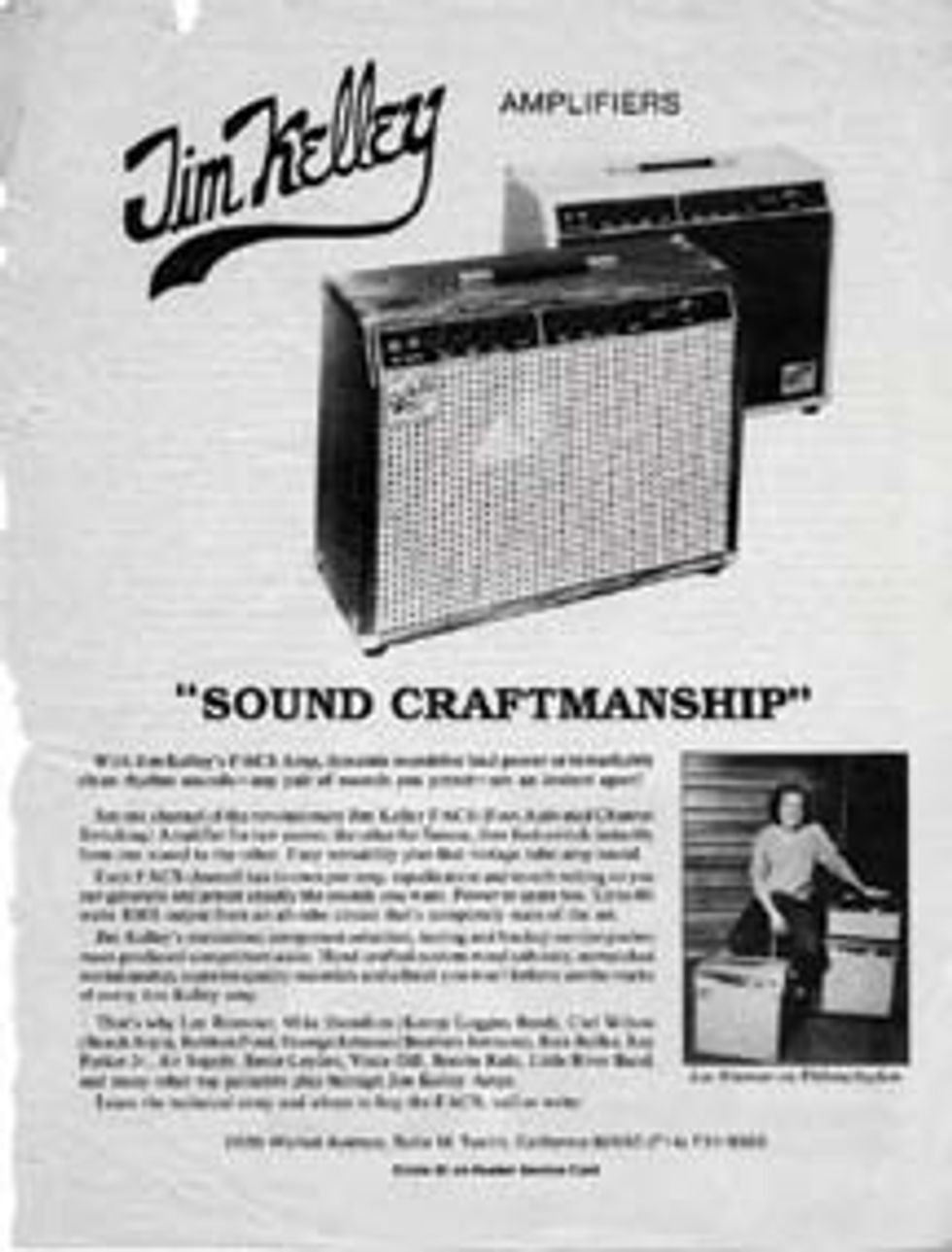 |
On my second day there, I fielded a call from Jim Kelley of Active Guitar Electronics. His shop was in Tustin, California, which was roughly an hour away, and he needed tubes immediately. Somebody had to deliver them, and that turned out to be me. When I arrived at Jim’s shop, I noticed two units on the bench. One was a combo that resembled a 4x10 Bassman with a wicker-cane grill and one was an Active Guitar Electronics attenuator unit—which, in my opinion, was the finest attenuator made during that era, because it didn’t shave off critical high frequencies like so many other units did back then.
That was the first time I played through a Jim Kelley amplifier, and it sounded amazing. It had a very smooth, even tone with great string-to-string separation. It reminded me of sipping a rich and creamy chocolate milkshake.
The Kelley FACS (Foot Activated Channel Switching) amplifier runs four 6V6s in its output tube section and is known for its extremely high plate voltages— 485 volts! That’s about 20 volts hotter than a modern-day Marshall head. An old blackface Fender Deluxe runs about 430 volts on its 6V6s, so you can see just how brutal that 485-volts reading is to the FACS’ output tubes.
You can switch the FACS’ output from 30 watts to 60 watts. In the 30-watt mode, only two output tubes are active, whereas all four output tubes are active in the 60-watt setting. The amp’s massively over-designed power transformer is rated at 135 watts RMS, which guarantees it an easy life, even when you drive the amplifier at full power. The FACS also sports active-shelving EQ controls, which sound very open, breathy, and natural. These amps have tremendous reverb circuits as well, with a deep, rich tone. Operating a FACS combo or head is very straightforward, because the front panel has only three controls: Gain (which has a pull-out Presence function), Treble (with a pull-out Bright setting), and Bass (with a pull-out Mid-boost function).
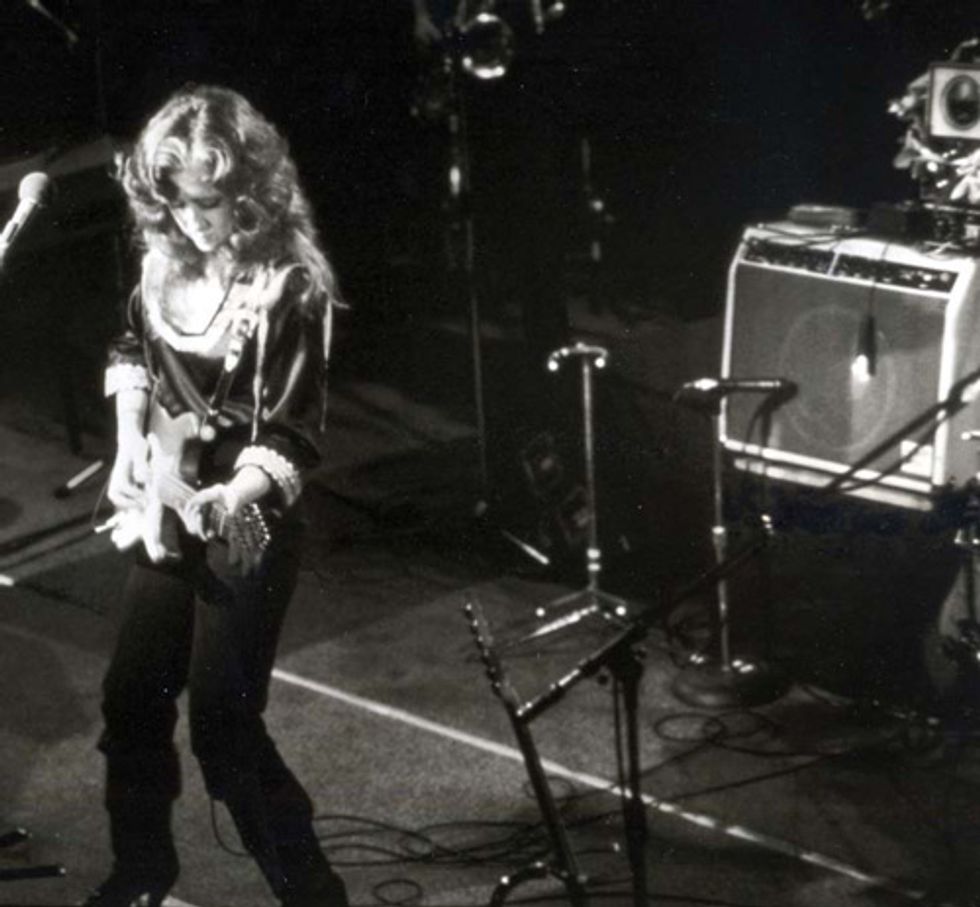
Bonnie Raitt onstage with her Jim Kelley FACS 1x12 combo (right) and Active Guitar Electronics
attenuator unit during her 1982 Green Light tour. Photo courtesy of Jim Kelley
One key element of the FACS circuit is that the tone controls boost and cut from the noon position. Adjusting counterclockwise from 12 o’clock cuts the setting, while adjusting clockwise past 12 o’ clock boosts it. It’s a brilliant design. I ended up playing through a couple of Jim Kelley amps for nearly 20 years. Many consider this gem of an amp “the other Dumble.” Why? Because it doesn’t have one iota of harshness in it.
Dean Farley is chief designer of Snake Oil Brand Strings, and his ideas have had a significant influence on contemporary string design. He is also known as a great source of guitar, amp, and gear lore. For more information, visit snakeoilstrings.com.



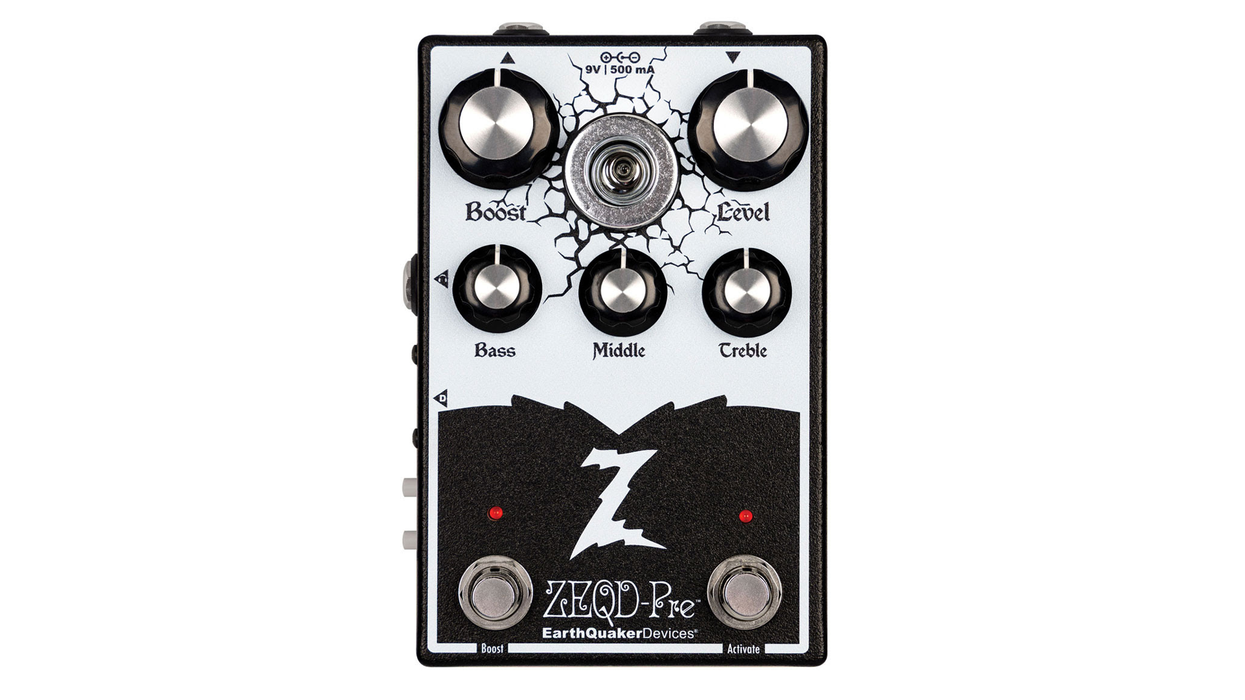
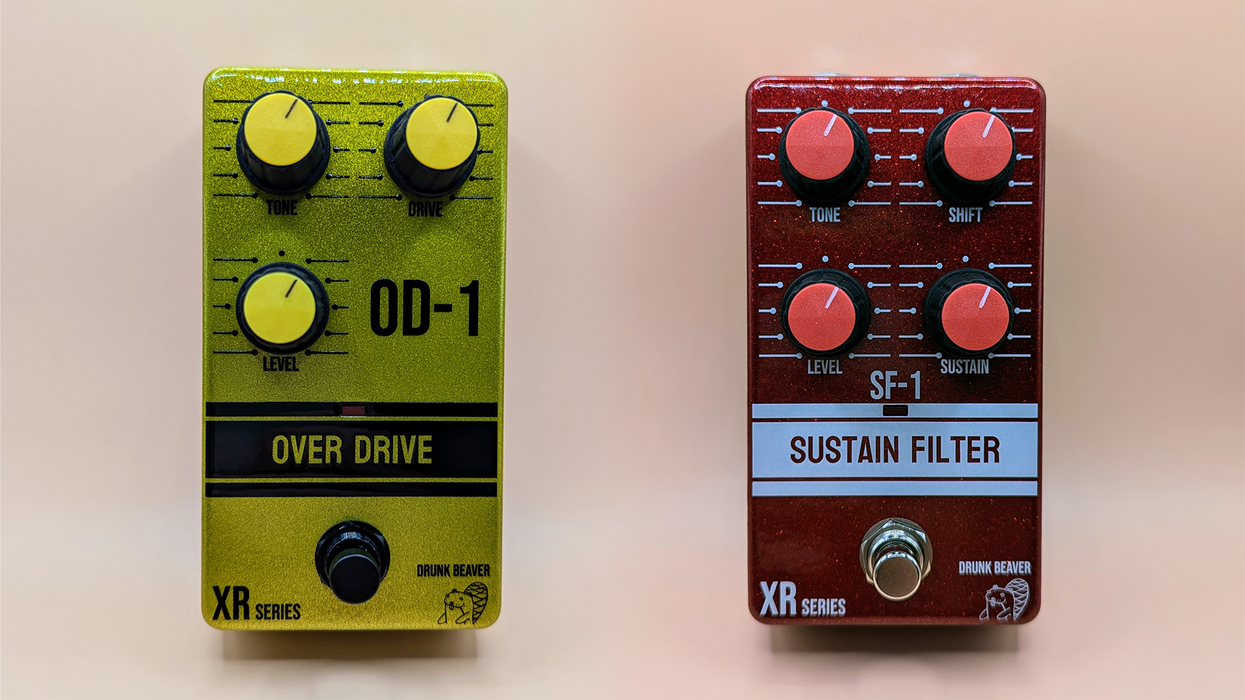
![Rig Rundown: John 5 [2026]](https://www.premierguitar.com/media-library/youtube.jpg?id=62681883&width=1245&height=700&quality=70&coordinates=0%2C45%2C0%2C45)
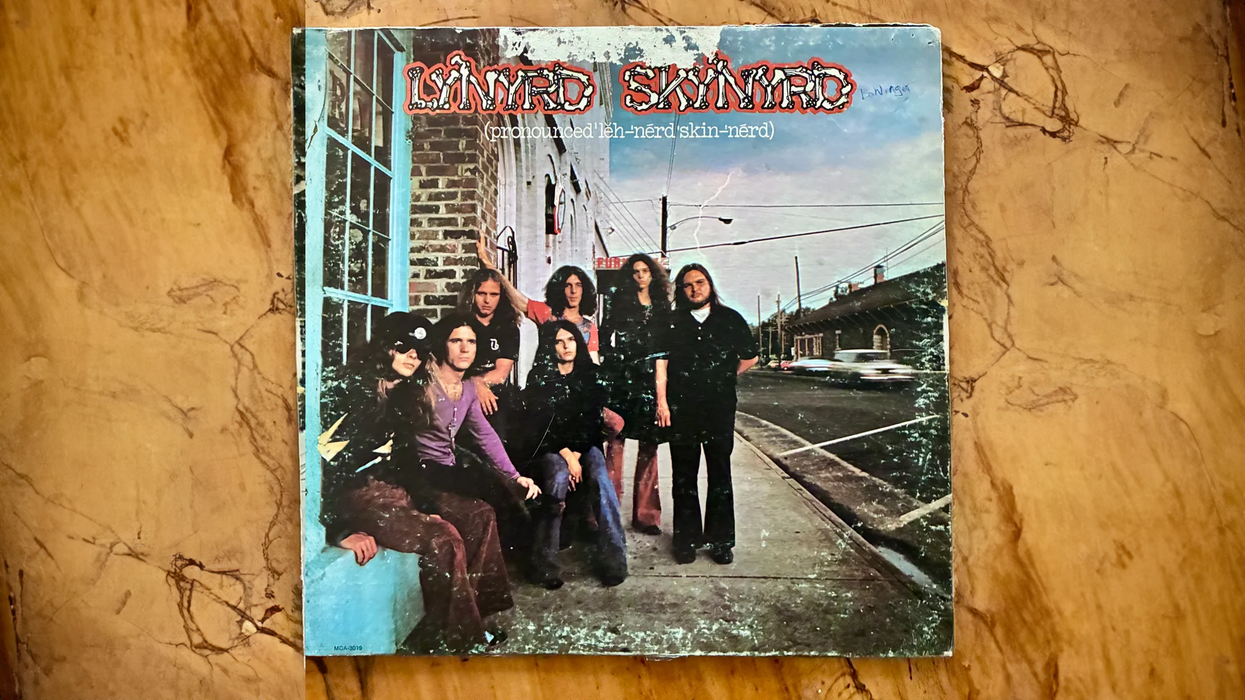








 This Episode Brought to You By: www.premierguitar.com
This Episode Brought to You By: www.premierguitar.com 